Arts Appreciation: Howells in the Dark — William Dean, We Still Hardly Know Ye
By Bill Marx
William Dean Howells furnished the most comprehensive and faithful examination of middle-class life that can be found in our literature.
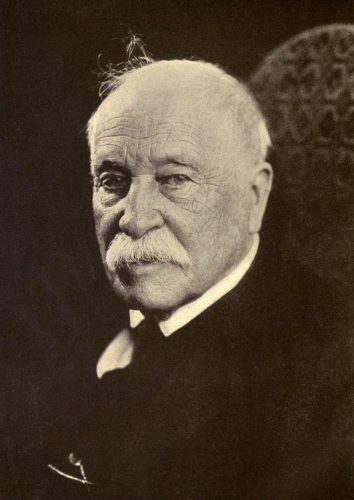
William Dean Howells in a photo taken a hundred years ago, the year of his death. Photo: Wiki Commons.
A hundred years ago today one of the most influential writers and editors in American history, William Dean Howells, died in Manhattan at the age of 83. His ashes are in Cambridge, MA, where he lived for a number of years.
His good friend Henry James believed that Howells’s writing (his novels include The Rise of Silas Lapham, Indian Summer, A Modern Instance, and A Hazard of New Fortunes) was “animated by a love of the common, the immediate, the familiar and vulgar elements of life, and holds that in proportion as we move into the rare and strange we become vague and arbitrary; that truth of representation, in a word, can be achieved only so long as it is in our power to test and measure it.” Another close comrade, Mark Twain, referred to the celebrated literary realist — who served as the editor of the Atlantic Monthly and later as a columnist for Harper’s Monthly — “the boss.” As a critic, Howells used his power to proselytize for the then challenging fiction of Thomas Hardy, Emile Zola, Sarah Orne Jewett, and Leo Tolstoy; he also introduced books by African-American authors Charles Chestnutt and Paul Laurence Dunbar to the American public.
But Howells’s detractors, H. L. Mencken among them, dismissed him as a lapdog for the establishment, an “industrious and inoffensive man … a highly respectable gentleman, a sitter on solemn committees, an intimate of college presidents and reformers, a man vouched for by both the Atlantic Monthly and the Ladies’ Home Journal.” A hundred years after Howells’s death Mencken seems to have been the victor, and that is unfortunate because he is far more than Mencken’s Babbit of letters. The truth is that Howells was a one-man literary industrial complex, a position that is inconceivable today in our fractured cultural pecking order. In their excellent 2005 biography of Howells, Susan Goodman and Carl Dawson get at Howells’s unstable mix of the visionary and the pragmatic: “He was at once a diplomatic ‘boss,’ a shrewd business man, a political radical, and a writer whose imagination changed the standards of American fiction.” Today, how Howells thrived while critiquing (albeit gently) the corruption, greed, and imperialism of America’s Gilded Age is instructive, even inspiring, given that he was the only major American writer to publicly support a group of anarchists accused of tossing a bomb at a policeman at the 1886 Haymarket Riot. There was scant evidence against them, and Howells worked strenuously to save the men from the scaffold. But four of them were hanged. Howells never proclaimed himself a radical, but his economic idealism led to utopian fables (1894’s A Traveler from Altruria and 1907’s Through the Eye of the Needle) that are firmly in the spirit of Edward Bellamy’s Looking Backward. Was Tolstoyan socialism welcomed by the Ladies’ Home Journal?
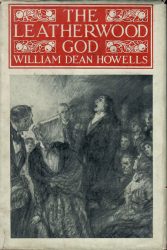 The Howells novel I have read most recently is 1916’s The Leatherwood God (his final book, The Vacation of Kelwyns, was published posthumously in 1920). Leatherwood is an enjoyable, if somewhat enervated, psychological drama about rural America’s weakness for worshiping strong men and magical thinking. Yes, the author makes relevant points about the appeal of fanaticism (World War I was under way) and our willingness to be deceived into accepting the transcendent with its salve of an afterlife. But this time around the pragmatist overwhelmed the visionary. The narrative is based on a real life figure in Ohio history, Joseph C. Dylks, who believed he was God and convinced others to become an obedient flock of worshipers. In his review of the book, H. L. Mencken notes that Howells “does not show how Dylks came to believe himself to be God; he merely says that he did so.” That is true, but Howells is also too concerned with reassuring us of religion’s moral good sense — he stints on the irrational exhilaration a spellbinding “jitney messiah” would generate, a mistake that Sinclair Lewis did not make in Elmer Gantry.
The Howells novel I have read most recently is 1916’s The Leatherwood God (his final book, The Vacation of Kelwyns, was published posthumously in 1920). Leatherwood is an enjoyable, if somewhat enervated, psychological drama about rural America’s weakness for worshiping strong men and magical thinking. Yes, the author makes relevant points about the appeal of fanaticism (World War I was under way) and our willingness to be deceived into accepting the transcendent with its salve of an afterlife. But this time around the pragmatist overwhelmed the visionary. The narrative is based on a real life figure in Ohio history, Joseph C. Dylks, who believed he was God and convinced others to become an obedient flock of worshipers. In his review of the book, H. L. Mencken notes that Howells “does not show how Dylks came to believe himself to be God; he merely says that he did so.” That is true, but Howells is also too concerned with reassuring us of religion’s moral good sense — he stints on the irrational exhilaration a spellbinding “jitney messiah” would generate, a mistake that Sinclair Lewis did not make in Elmer Gantry.
Twenty years ago (April, 1990) I wrote a column for the Boston Phoenix Literary supplement on two Library of America volumes containing seven novels by William Dean Howells. At the time, LOA promised that two more volumes of his writings were to come — but that has yet to happen. It is near impossible to find material from the Boston Phoenix, so I am posting it below to pay homage to Howells.
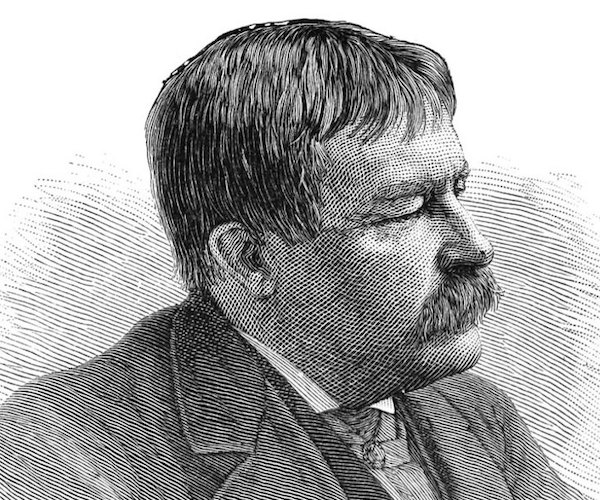
Engraved portrait of William Dean Howells, artist unknown, from The Illustrated Birthday Book of American Poets, 1882. (Public domain via Wikimedia Commons)
“All reputation is hazardous,” wrote William Hazlitt, “hard to win, harder to keep.” Few American writers have lost out as unjustly as William Dean Howells (1837-1920), who was one of 19th-century America’s most respected novelists, influential critics, and gutsy liberals (he was the only major writer in the nation to protest the legalized murder of the Haymarket anarchists.) Except for Mark Twain, Howells is the most representative American writer in the period between the Civil War and World War I, his expansive realism rebelling against the romances of Hawthorne and Melville and plowing the way for Dreiser and Crane.
In more than 35 novels, over 30 plays, and another 20 or 30 volumes of criticism, biography, and travel, the writer furnished the most comprehensive and faithful examination of middle-class life that can be found in our literature. New England villages and Ohio towns, bohemia and suburbia, autumnal Boston and vigorous New York — Howells limned the country’s North and East (unlike Twain, he never roughed it in the South or the West) with a deft and delicate truth. He was the Gilded Age’s Balzac, a role this champion of populism and socialism, who was at home in Russian, Spanish, French, and German letters, adopted out of calculation rather than simplicity or timidity.
Howells’s self-consciousness came from his deep moral awareness of the conflict between an Emersonian vision of this country’s innocence (shared by Henry James) and the growing evidence that the promise of American life had not been fulfilled. Unlike James and Edith Wharton, he didn’t snub America; on the whole, he thought his neighbors were intelligent, moral people, worthy of being written about. A native of Ohio who lived on the East Coast most of his life, Howells was not insensitive to the failures of American democracy, the inequalities of the economic system, the insincerities of society, the corruption of politics, and the sins of racism. Yet he felt that few promises are ever kept, man is not perfectible, and that America had done as well as any nation, maybe ever a bit better than most, at fulfilling its mission.
Rather than concentrate on the dark side of American life, Howells played with utopian theories that, because they combined bits of homegrown Christianity and a smattering of Tolstoy, were always pretty fuzzy. Yet his books became increasingly controversial during the 1880s and ’90s because they showed, politely but firmly, that reality and dream were drawing further and further apart. As Howells came “face to face with the riddle of the painful earth,” his novels struck an oxymoronic note of cheery ruefulness. Ironically, America’s first realist may have been its last true romantic.
So what happened to the congenial rabble-rouser? Except for his novels The Rise of Silas Lapham, A Modern Instance, and A Hazard of New Fortunes, which are chestnuts roasted over a few college classrooms, he’s largely ignored.
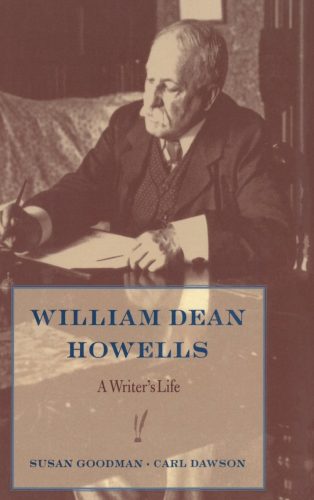 Henry James, Howells’s friend and most perspicacious (if occasionally patronizing) competitor, unwittingly sums up the case against as well as for: “He thinks scarcely anything too paltry to be interesting, that the small and the vulgar have been terribly neglected, and would rather see an exact account of a sentiment or a character he stumbles against everyday than a brilliant evocation of a passion or a type he has never seen…. He adores the real, the natural, the colloquial, the moderate, the optimistic, and the democratic.”
Henry James, Howells’s friend and most perspicacious (if occasionally patronizing) competitor, unwittingly sums up the case against as well as for: “He thinks scarcely anything too paltry to be interesting, that the small and the vulgar have been terribly neglected, and would rather see an exact account of a sentiment or a character he stumbles against everyday than a brilliant evocation of a passion or a type he has never seen…. He adores the real, the natural, the colloquial, the moderate, the optimistic, and the democratic.”
The last three adjectives were fightin’ words then as well as now, and the perception that the strait-laced author represented the affluent middle class made him a pariah among young turks like H. L. Mencken, who in 1911 preferred “the straightforward, clangorous English of Clemens to the simpering, coquettish, overcorseted English of the later Howells.” Compared with Twain’s iconoclastic humor and Dreiser’s muckraking, Howells concern with “the delicate beauty of everyday lives” and the “more smiling aspects” of life make him look like a fuddy-duddy, not the dean, of American literature.
The neglect continues to this day and for strikingly similar reasons. The academic tastemaker’s appetite now runs to labyrinthine tomes of nightmare, fear, and dislocation. And conventional academics have to find literature as unconventional as it is despairing. “Much of the history of the novel in the present,” writes critic Frank Kermode, “is dominated by the notion that technical changes of a radical kind are necessary to preserve a living relationship between book and world.”
Apparently, the pleasures of language aren’t good enough to guarantee a “living relationship” with whatever lies outside of the page — authors either experiment or drop dead. Writers of the past are evaluated by this critical/aesthetic framework; those who seem to fit the Procrustean yardstick (the usual suspects) are renovated, those who don’t measure up are discarded. The obsession with formal pyrotechnics means that a writer like Henry James is reclassified as a proto-modernist, while contemporaries like Wharton and Howells are pushed aside as adept reporters. Wharton’s canny realism, though, which described society red in tooth and claw, receives more attention than the insufficiently alienated fiction of Howells, which is perceived as being too sunny-side up.
In his recent book on George Orwell, The Politics of Literary Reputation, John Rodden argues that an evaluation of literary taste shouldn’t just be a sociological survey of the reactions of the “critical apparatus” (academia, “alternative” magazines, mainstream book chat). It must evaluate the aesthetic, political, and personal motivations that create the images of an author over time. For example, an attempt by Lionel Trilling to resurrect Howells in the ’50s failed because Trilling uses the novelist as a club against the bleak warlords of modernism. Ironically, like Howells’s detractors, Trilling wanted the novelist to stand for the conservative status quo, praising “his passionate wish to speak out for the benign relaxation of the will, for goodness and gentleness.” Tellingly, the critic doesn’t include a single quote from the author’s fiction in this plea. No one, not even this defender, seems to read Howells for the ample enjoyment his writing gives.
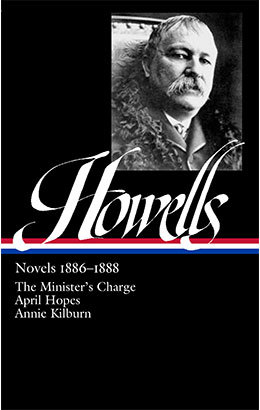
It’s time Howells was revered as an artist rather than a bourgeois whipping post, and the invaluable Library of America is giving us a chance to do just that. Two volumes of a projected four have been published: Volume I, Novels 1875-1886, includes A Forgone Conclusion along with Indian Summer, Silas, and Modern Instance; Volume II, Novels 1875-1888, contains the obscurer The Minister’s Charge, April Hopes, and Annie Kilburn. Indian Summer, Howells’s charming novel about a middle-aged man’s flirtation with a young American girl in Florence, has also been published separately in paperback, with a graceful and admiring preface by John Updike. Since Gore Vidal, in his recently published essay collection At Home, weighs in on the plentiful virtues of Volume I (“For those who are obliged for career reasons to read Howells, this is a useful book. For those who are still able to read novels for pleasure, this is a marvelous book.”), I’d like to plug Volume II, which contains lesser-known novels that are considered weak because of the lack of what Updike calls “formal concentration.”
The Minister’s Charge tells the lamentable story of Lemuel Barker, a would-be poet, who at the insincere encouragement of a clergyman, David Sewell, leaves his impoverished farm for Boston only to find poverty and blunder into a debilitating marriage. Howells subject here is homelessness in the big city, instigated by liberal piety about self-improvement. Although there are some wonderful descriptions of a humane 19th-century Pine Street Inn, the sections that call for social reform don’t mix well with Howells’s gift for the minute, the particular, and the personal — he has trouble drawing convincing portraits of the very rich and very poor. But this fascinating book, which brings Barker from penury to lower-class respectability, contains lots of adept social observation (though no naturalistic rawness). Here — as in Annie Kilburn, a witty, mildly Tolstoyan fable about an upper-class woman who leaves Rome for a small Massachusetts town in order to do good works — Howells gets at a peculiar brand of American wrongdoing that James and Updike, who prize fiction that dramatizes the active power of evil, overlook. The American experiment, Howells suggests, may fail because the country has sold its soul to shiftlessness and complacency, not because its struck a Faustian deal. “If a community was corrupt, if an age was immoral, it was not because of the vicious, but the virtuous who fancied themselves indifferent spectators,” observes a chastened Sewell. “It was not the tyrant that oppressed, but the wickedness that made him possible.”
Flawed as The Minister’s Charge and Annie Kilburn may be as social-protest tomes, the books offer, amid the criticism, Howells’s spry eye for life’s small, good things. The third book in Volume II, April Hopes, seems to me to an overlooked gem, an astringent chronicle of a courtship between two mismatched people — the naive but feckless Dan Mavering and the somewhat morbidly ascetic Alice Pasmer — which is not only a hilarious satire about a pathologically doomed marriage, but a striking parable about the uneasy coupling of leisure and Puritanism in the American psyche. It’s a masterly performance (why isn’t it better known?), filled with what James called Howells’s genius for “imparting a palpitating interest to common things and unheroic lives.” Although he wrote about the everyday with stubborn regularity, Howells knew that fiction has to catch “the irregular rhythms of life.” Few American writers have heard the native drum beat better.
Bill Marx is the editor-in-chief of The Arts Fuse. For over three decades, he has written about arts and culture for print, broadcast, and online. He has regularly reviewed theater for National Public Radio Station WBUR and The Boston Globe. He created and edited WBUR Online Arts, a cultural webzine that in 2004 won an Online Journalism Award for Specialty Journalism. In 2007 he created The Arts Fuse, an online magazine dedicated to covering arts and culture in Boston and throughout New England.
